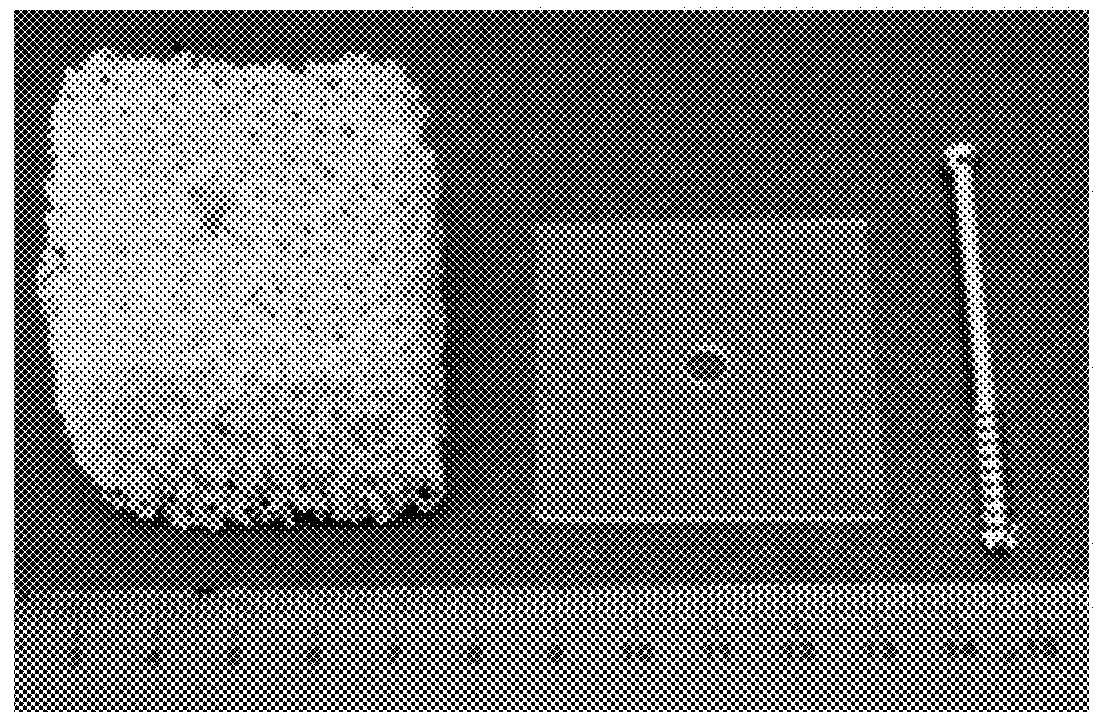Injectable bone substitutes for augmenting implant fixation
a technology implants, which is applied in the field of injectable bone substitutes for augmenting implant fixation, can solve the problems of poor implant fixation, increased risk of fracture of adjacent vertebrae (fulcrum), and inability to contribute to strong initial fixation
- Summary
- Abstract
- Description
- Claims
- Application Information
AI Technical Summary
Benefits of technology
Problems solved by technology
Method used
Image
Examples
example 1
Preparation of Injectable Biphasic Ceramic Bone Substitute Composition
[0095]In this Example, 3 different types of hardenable ceramic bone substitute materials have been prepared. All three samples consisted of 59.6 wt % α-CSH, 40.0 wt % HA, 0.4 wt % CSD and the same liquid-to-powder ratio (L / P=0.43 mL / g), but the liquid phase as well as the type of compound added was varied, see Table below.
Sample nameLiquid phaseAdded compoundCSH / HAIohexol—(180 mg I / mL)CSH / HA + GentaSalineGentamicin sulfateCSH / HA + VancoIohexolVancomycin(180 mg I / mL)hydrochloride
[0096]CSH / HA
[0097]11.6 g of the ceramic bone substitute was mixed with 5.0 mL of a liquid phase containing iohexol (180 mg I / mL), i.e. giving a L / P ratio of 0.43 mL / g. The mixing was conducted for 30 seconds using a specially designed mixing and injection device (WO 2005 / 122971). The obtained paste could be injected with a 16 G needle for up to 5 min and be molded by hand between 5 and 7 minutes. The initial setting time of the paste was 8 ...
example 2
Use of a Model System to Demonstrate that an Injectable Biphasic Ceramic Bone Substitute Composition Comprising Vancomycin Enhances the Fixation of an Implant
[0105]The effect of injectable compositions, prepared according to example 1, on the fixation of an implant was determined in a model system by determining the pull-out strength and resistance to torsional forces of screws inserted into a cancellous bone model that has been augmented with the injectable composition.
[0106]The cancellous bone model comprised a rigid open cell foam block (product no. 1522-507) supplied by Sawbones® (Sawbones.com). The foam block has a cell structure that is over 95% open, with a cell size is 1.5 to 2.5 mm resembling that of human cancellous bone, making it suitable for dynamic testing or cement injection. The foam block has a density of 0.12 g / cc, a compressive strength is 0.28 MPa and compressive Modulus is 18.6 MPa, which is relatively low in order, and was used because it most closely mimicks o...
example 3
Setting Performance of an Injectable Biphasic Ceramic Bone Substitute Composition Comprising Vancomycin
[0125]The following tests demonstrate the effect of the vancomcyin content of an injectable ceramic bone substitute on its setting properties, within a concentration range of 33-132 mg vancomycin / mL paste. In these tests, the ceramic bone substitute consisted of 59.6 CSH, 40% HA and 0.4% CSD and the L / P ratio was 0.43 mL / g. Three different types of liquid phases were investigated. The setting time was analyzes with Gillmore needles, ASTM C266. The results are found in Table 1.
TABLE 1Setting properties of ceramic bone substitute comprising different amounts of Vancomycin.InitialFinalsettingsettingAmount oftime,time, Mold-In-Type of liquidVancomycinISTFSTabilityjectablephase(mg / mL)(min)(min)start(min)Iohexol solution,336.510.5 5 min5180 mg I / mL667124 min 45 s5(CERAMENT ™13269 4 min3IC-TRU)Sterile water337.511 7 min7(WFI)668.5135 min 15 s7.513279.54 min 50 s5Saline331214.510 min8(9 mg...
PUM
| Property | Measurement | Unit |
|---|---|---|
| particle size | aaaaa | aaaaa |
| cell size | aaaaa | aaaaa |
| compressive Modulus | aaaaa | aaaaa |
Abstract
Description
Claims
Application Information
 Login to View More
Login to View More - R&D
- Intellectual Property
- Life Sciences
- Materials
- Tech Scout
- Unparalleled Data Quality
- Higher Quality Content
- 60% Fewer Hallucinations
Browse by: Latest US Patents, China's latest patents, Technical Efficacy Thesaurus, Application Domain, Technology Topic, Popular Technical Reports.
© 2025 PatSnap. All rights reserved.Legal|Privacy policy|Modern Slavery Act Transparency Statement|Sitemap|About US| Contact US: help@patsnap.com



